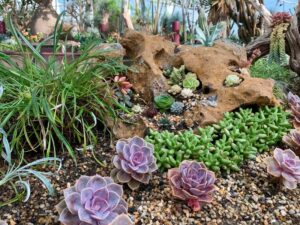
Maintain Your Garden
Raised beds require consistent care. Focus on watering, feeding, and managing pests to keep your plants healthy.
Watering Strategy
Raised beds drain faster than in-ground gardens, so they need regular watering. Water deeply and less frequently to encourage strong, deep root systems. Check the soil moisture by inserting your finger two inches down. If the soil is dry at that depth, the bed needs water. A soaker hose or drip irrigation system is highly efficient. These systems deliver water directly to the soil, conserving moisture and keeping plant leaves dry.
Feeding Your Plants
The intensive planting in a raised bed depletes soil nutrients quickly. You must replenish them. Start each season by adding a one-inch layer of fresh compost to the soil surface. For heavy-feeding plants like tomatoes and peppers, supplement with a balanced organic liquid fertilizer every 2 to 3 weeks during their peak growing period.
Weed and Pest Management
Weeding is easier in a raised bed. Remove weeds as soon as you see them so they do not compete with your plants for water and nutrients. Apply a 2-inch layer of mulch, such as straw or shredded leaves, around your plants. Mulch suppresses weeds, retains soil moisture, and regulates soil temperature. Regularly inspect your plants for signs of pests. Hand-pick larger insects like tomato hornworms. Encourage beneficial predators like ladybugs by planting dill or fennel nearby.















